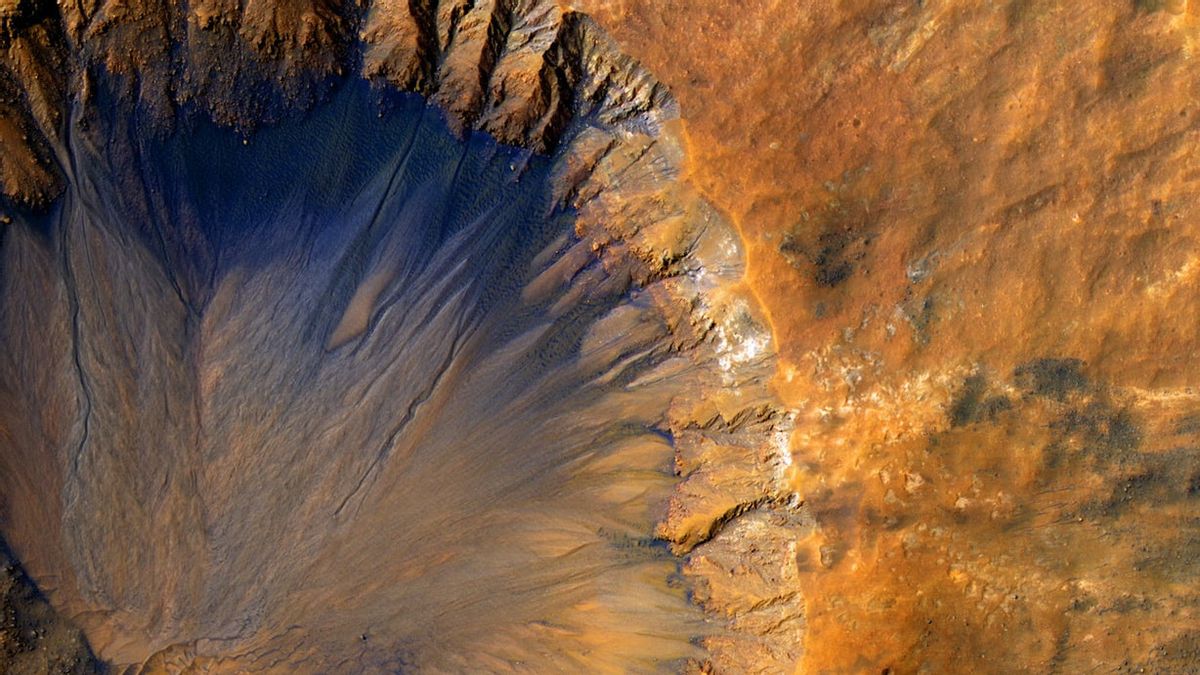JAKARTA - The Red Planet or Mars, which seems calm without life like Earth, has experienced three very large earthquakes. The quake has been detected by NASA's InSight robotic lander.
The discovery of InSight can certainly give scientists an idea of how the interior of Mars is. It is known, InSight has landed near the equator of Mars in November 2018. This mission was formed to investigate the interior of Mars.
NASA reported from Space, Saturday, September 25, InSight recorded an earthquake of magnitude 4.2 and 4.1 occurred on August 25, 2021. Then, an earthquake of magnitude 4.2 occurred on September 18 which lasted for almost 90 minutes.
The previous record for the strongest earthquake was a magnitude 3.7, or about five times smaller than an earthquake with a magnitude of 4.2. This earthquake was recorded by InSight in 2019.
The InSight team is currently studying the September 18 earthquake. However, researchers have been able to characterize the earthquake on August 25, which is stated to have originated 5,280 miles (8,500 kilometers) from where InSight is located. This is the farthest earthquake ever detected by a robot.
Even further from the distance of Cerberus Fossae, the region that has spawned almost all of the strong earthquakes so far. Cerberus Fossae is about 1,600 kilometers from the lander, which is believed to have been the site of lava flows several million years ago.
Meanwhile, NASA also said the magnitude 4.1 earthquake on August 25 occurred at a much closer radius, about 575 miles (925 km). With a higher and faster frequency vibration, when compared to a magnitude 4.2 earthquake.
"Even after more than two years, Mars seems to have given us something new with these two earthquakes, which have unique characteristics," said InSight principal investigator Bruce Banerdt.
To detect earthquakes on the mainland of Mars, InSight uses two tools. These instruments are called heat probes and supersensitive seismometers. Also assisted with communication equipment to track the exact location of the earthquake.
The heat probe, also known as the 'mole', was deprecated earlier this year. This is because the mole is considered difficult to go underground, and is blocked by Martian soil which is difficult to excavate.
InSight overcomes the considerable difficulty of making the newly reported earthquake detection. A lot of dust has accumulated on the robot's solar panels since landing, reducing its power output considerably.
This problem was exacerbated recently by Mars' orbital path, which takes it further and further from the Sun (Aphelion). So the mission team temporarily turned off some of the instruments to conserve energy, which the InSight heater needed more to cope with the dropping temperatures and clean up some of the dust.
The team did this by using the lander's robotic arm to drip sand onto InSight's solar panels. When the Martian wind brushes these grains, they carry dust. This effort allows InSight to maintain relatively stable power levels through aphelion.
The English, Chinese, Japanese, Arabic, and French versions are automatically generated by the AI. So there may still be inaccuracies in translating, please always see Indonesian as our main language. (system supported by DigitalSiber.id)











